From August 2023 the comments on statistics, a short description of selected, recently issued statistical data in the area of monetary statistics and the non-residents sector statistics, are no longer published. They are replaced by Statistical releases.
Comments on monetary developments for January 2022
Total liquid assets (M4) and money (M1) decreased in January as a result of the decrease in net foreign assets (NFA) of the monetary system, while placements remained almost unchanged. The M4 and M1 annual growth rates remained very high.
Total liquid assets (M4[1]) decreased in January by HRK 1.5bn or 0.4% (based on transactions) from the end of the previous year as a result of the decrease in net foreign assets (NFA) of the monetary system (Table 1). The monthly decrease in NFA is for the most part accounted for by the decrease in NFA of the CNB, that is, by the fall in bank assets in the TARGET2 system. Money (M1[2]) fell by HRK 1.6bn or 0.8%, predominantly reflecting a decrease in currency outside credit institutions, while quasi-money increased slightly, by HRK 0.1bn or 0.1% from the previous month (Table 3). On an annual level, the growth rates of M4 and M1 slowed down to 10.1% and 15.9% in January (Figure 1), while quasi-money accelerated its growth to 5.6%. In the structure of quasi-money, kuna deposits decreased and foreign currency deposits increased, with the greatest increase registered by foreign currency household deposits, which increased by HRK 0.9bn in January and thus accelerated their annual growth rate from 6.0% in December to 6.6% in January. At the same time, foreign currency corporate deposits, despite the monthly fall of HRK 1.1bn, continued to boast high annual growth rates (7.7% in January). Despite high growth rates, the share of foreign currency deposits in total deposits decreased slightly on an annual level.
| Figure 1 Monetary aggregates annual rates of change based on transactions |
Figure 2 Placements annual rates of change based on transactions |
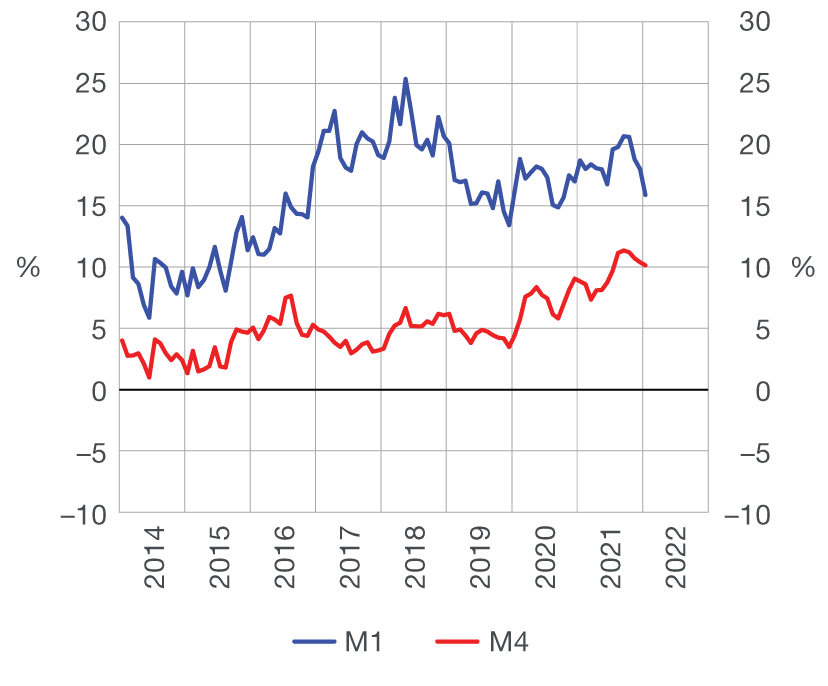 |
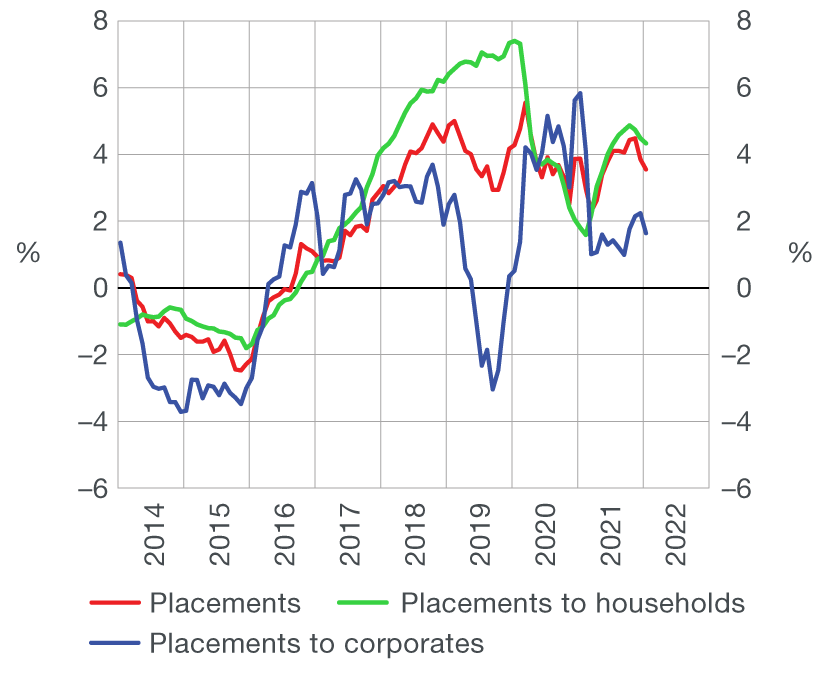 |
| Source: CNB. |
Total placements of monetary institutions to domestic sectors (except the central government) remained almost unchanged from the previous month, while their annual growth rate slowed down from 3.9% in December of the previous year to 3.6% in January of this year (Figure 2). In total placements, which stood at HRK 246.0bn in January, loans, which held steady at the previous month's level, accounted for the greatest share (HRK 239.1bn) (Table 2). These developments reflect a stagnation in loans to non-financial corporations and households, while the increase in loans to other financial institutions was offset by the decrease in loans to the local government. With regard to lending to households, the growth of non-purpose cash loans and housing loans continued, while credit card credits with the card company guarantee decreased by a similar amount. On an annual level, the growth of corporate placements slowed down, from 2.3% in December to 1.6% in January, and the growth of placements to households slowed down negligibly, from 4.5% to 4.4%. The slowdown in the growth of housing loans continued just before a new round of subsidies is to be initiated (from 9.2% to 8.4%), while the growth of non-purpose cash loans accelerated (from 2.4% to 3.3%).
Table 1 Summary consolidated balance sheet of monetary institutions
in billion HRK and %
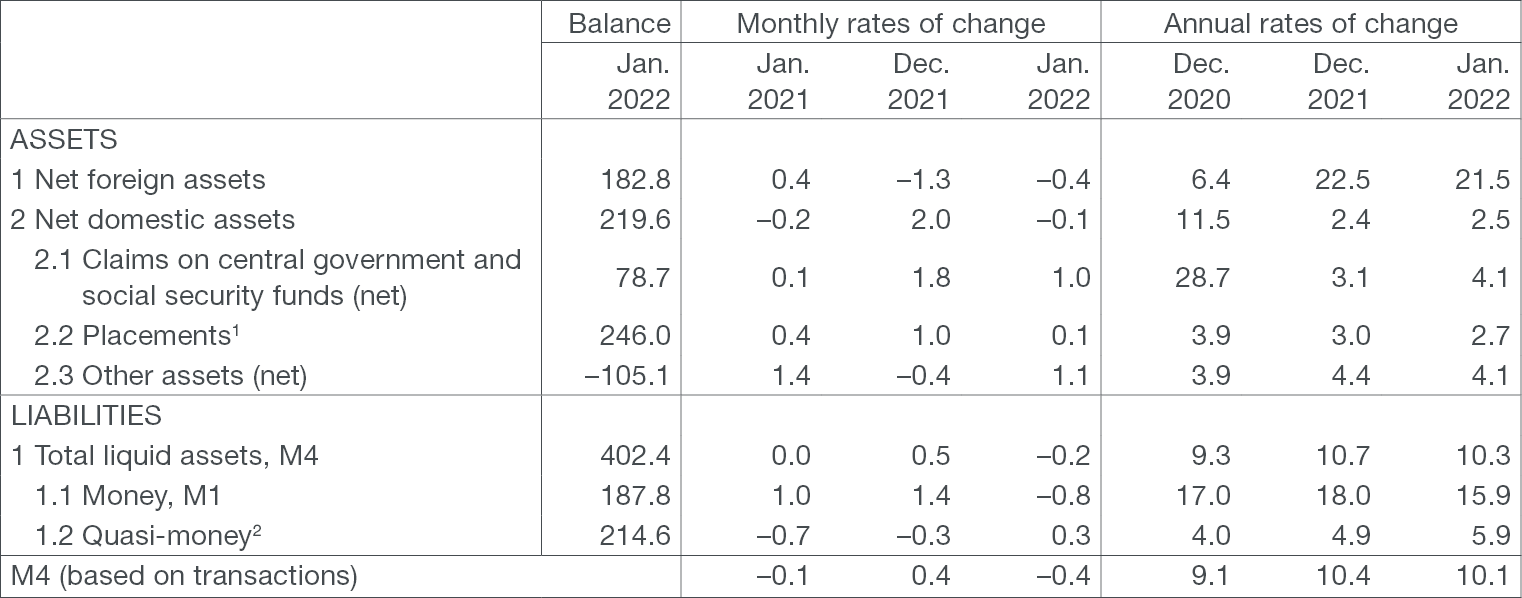
1The sum total of asset items 2.2 to 2.8 of Bulletin Table B1: Consolidated balance sheet of monetary financial institutions.
2The sum total of liability items 2 to 5 of Bulletin Table B1: Consolidated balance sheet of monetary financial institutions.
Source: CNB.
Table 2 Loans (except the central government) and main components
in billion HRK and %
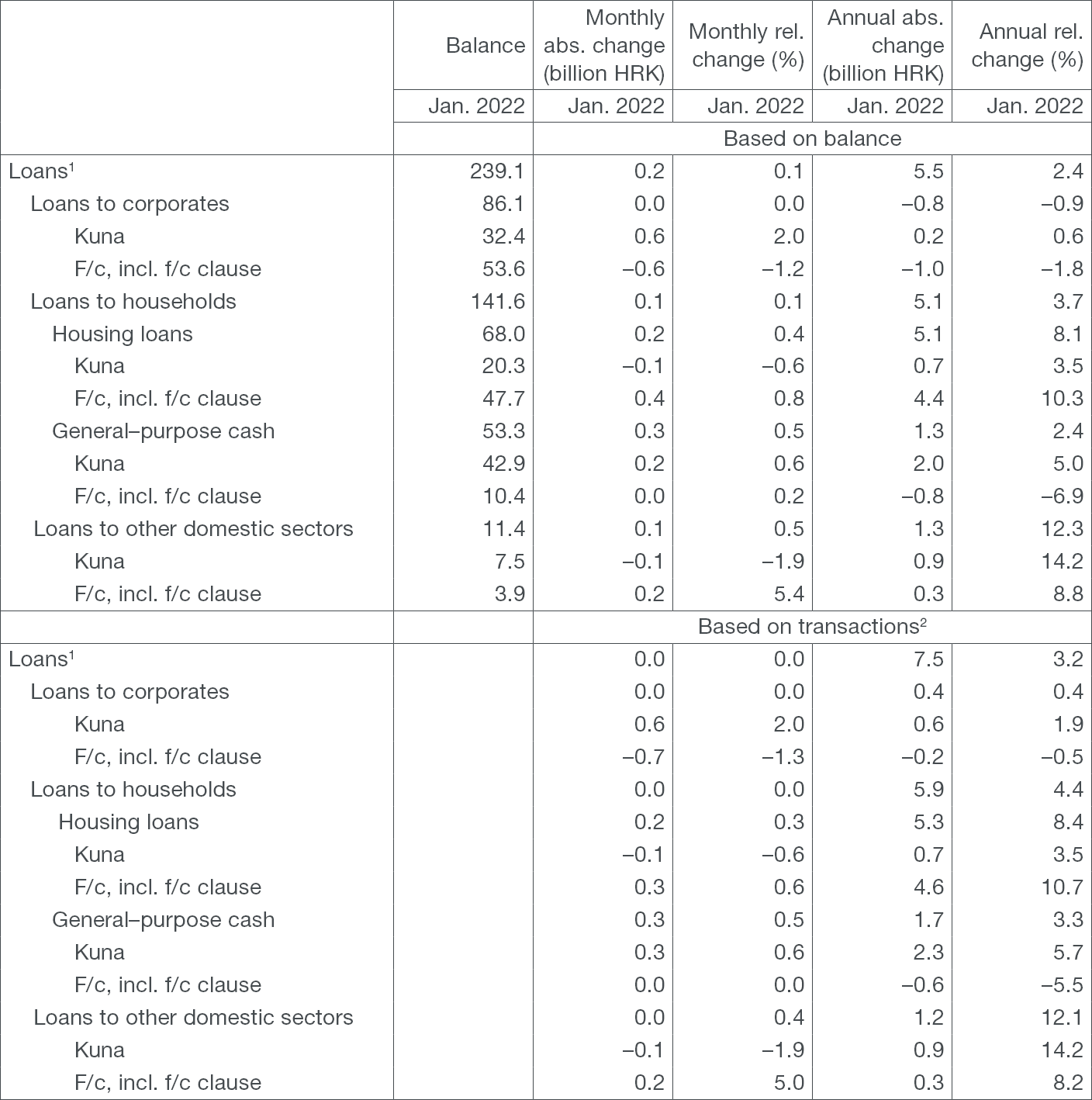
1In addition to loans to households and corporates, they also include loans to the local government and other financial institutions.
2The transactions show changes that exclude the effects of exchange rate changes, securities price adjustments, reclassification and write-off of placements, including the sale of loans in the amount of their value adjustment.
Source: CNB.
Table 3 Deposits (except the central government) and main components
in billion HRK and %
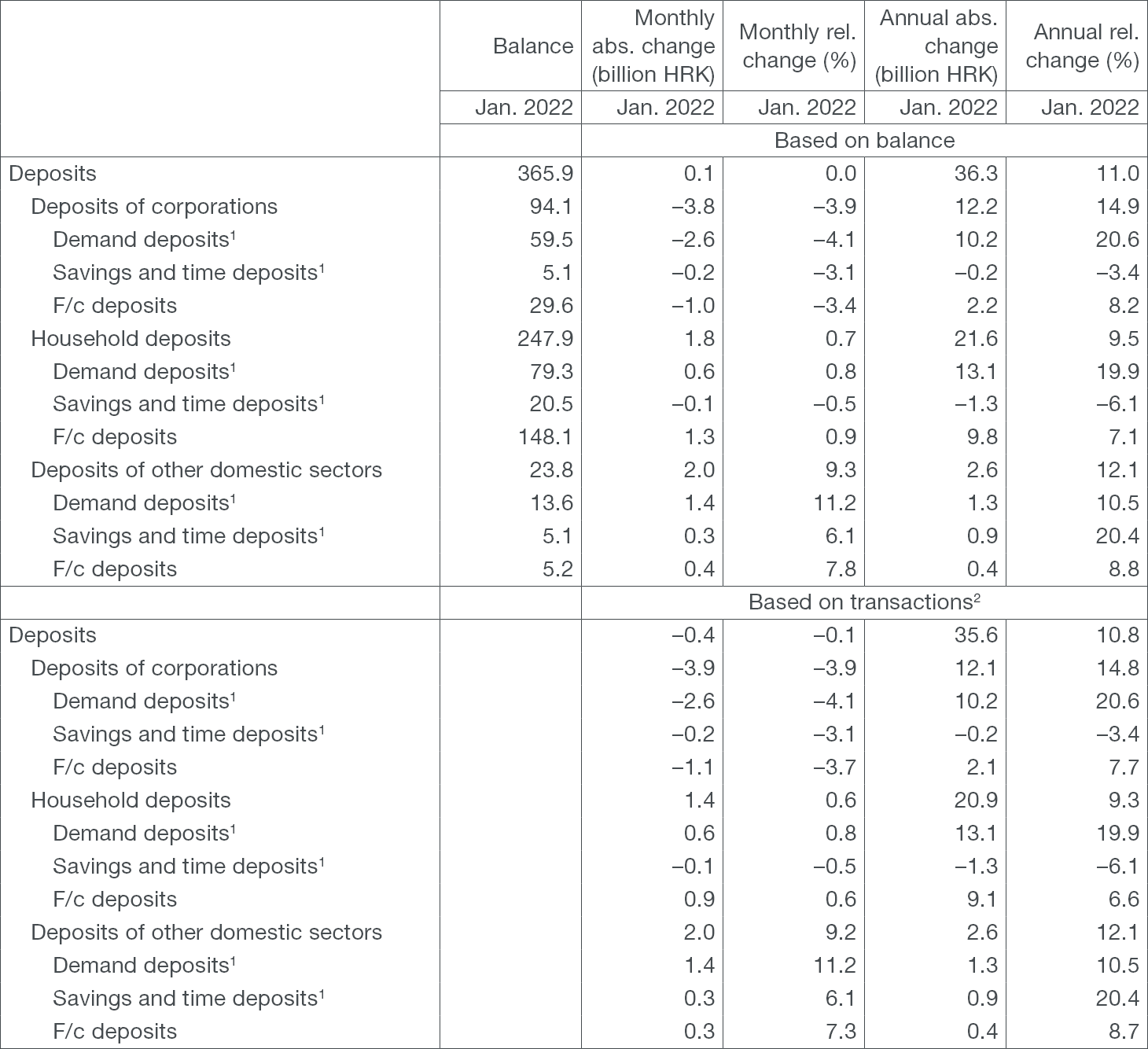
1Includes only kuna sources of funds of credit institutions.
2The transactions show changes that exclude the effects of exchange rate changes, securities price adjustments, reclassification and write-off of placements, including the sale of loans in the amount of their value adjustment.
Source: CNB.
For detailed information on monetary statistics as at January 2022, see:
Central bank (CNB)
Other monetary financial institutions
